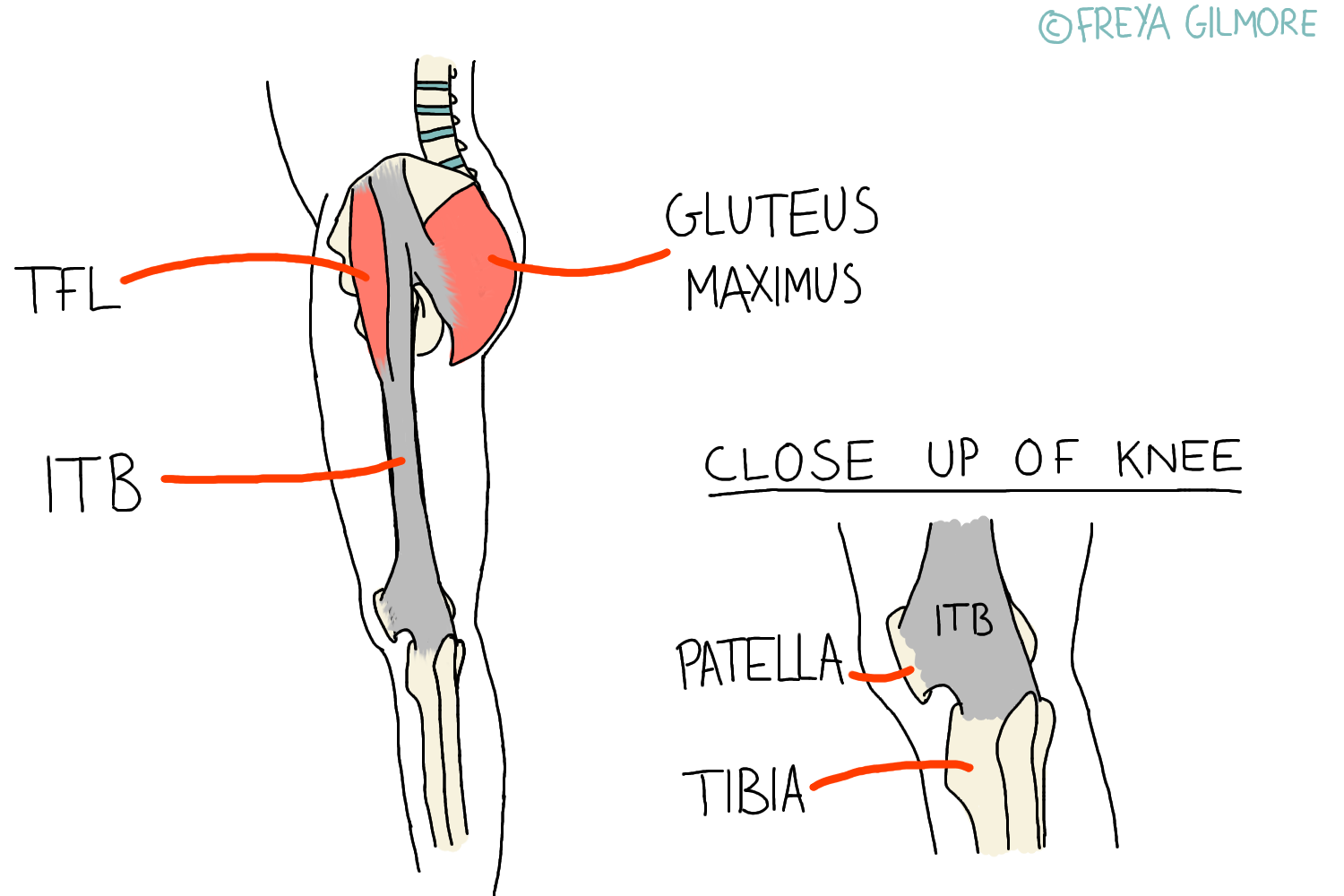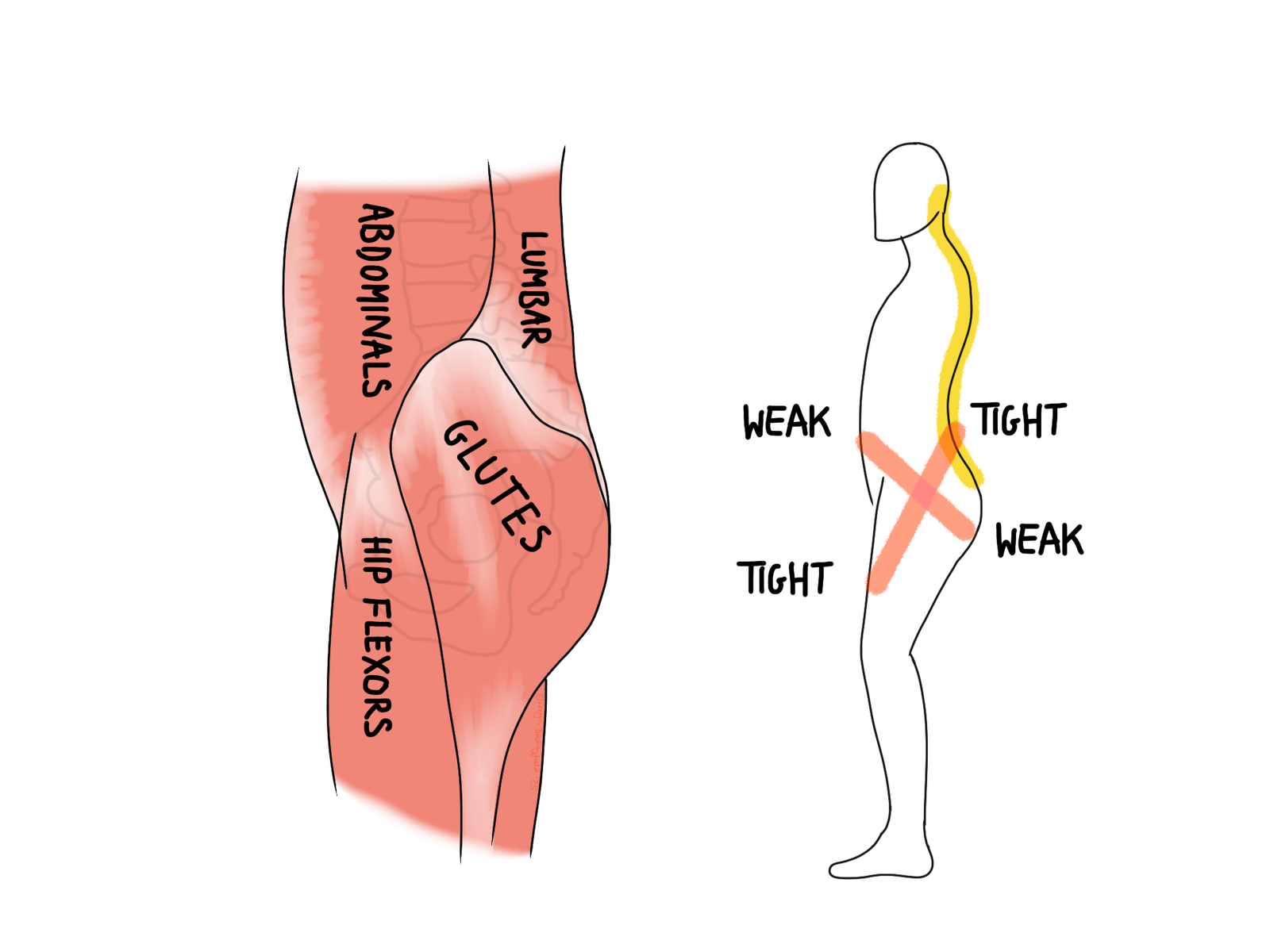The IT band is a band of tissue that runs down the side of the…

Osteopathy and Rheumatoid Arthritis
Rheumatoid arthritis (RA) is often confused with osteoarthritis (OA), but the two are very different. Whereas OA is considered a more mechanical condition of “wear and tear”, RA is autoimmune. That means the immune system mistakenly attacks the body’s own tissues.
Basics of Rheumatoid Arthritis
The small joints of the hands, feet, and neck are usually the first affected. Rheumatoid Arthritis causes cycles of inflammation and injury, followed by incorrect healing. The illustration above shows the effects of this altered healing on the hands. During the inflammatory phase, the membrane within the joint is attacked, and when the body tries to fix it, it lays down bone where it shouldn’t be. So bumps form over the joints, which at first may be soft, warm, and red. Over time, they become harder and permanent as they are formed of bone. Alongside the bumps and discomfort, the repeated swelling can overstretch ligaments, causing hypermobility. Hypermobility comes with its own set of problems, as the muscles around the area have to work harder to support the joint. If the neck is affected, this can cause neck tension that leads to headaches.
Onset and Identification
Symptoms often arise in the late twenties onwards: a contrast to OA, which develops from the 40s onwards. There may be no obvious trigger, but sometimes the first symptoms will follow trauma, whether physical or emotional. This includes stresses like pregnancy or bereavement. Symmetrical joints on both sides of the body might develop symptoms at the same time, which is a key flag that something systemic might be going on. The relapsing and remitting nature is also key information for reaching a diagnosis. Sometimes you might develop a general feeling of being unwell, or a fever.
Your osteopath can help to come to a conclusion, but if we suspect RA, we will refer you back to your GP for further testing. Blood tests are usually the first on the list, and scans may follow. You should be referred to a rheumatologist for a formal diagnosis and specialist treatment plan.
Most cases relapse and remit for years, but sometimes a single episode will be the full extent of it. This is less common and may make diagnosis more tricky, but still important. RA is associated with inflammation beyond the joints, leading to higher rates of cardiovascular and respiratory disease.
Treating Rheumatoid Arthritis
Although your osteopath can help to support the management of your RA, you’ll need help from your rheumatologist for the best results. They can perform tests to identify the extent of the condition, and prescribe medications to slow the progression of it. Medications include anti inflammatories to reduce the initial damage of an episode, and disease modifying drugs that limit the autoimmune response.
Osteopaths are qualified to help with rheumatic and arthritic pain. And of course, we can support the compensatory patterns outlined above. Some patients find that regular treatment every six weeks or so helps to keep on top of symptoms, and offers opportunity for extra support when flares do arise. Gentle treatment combined with an attainable exercise plan puts you in the best stead going forwards. Let us know your treatment goals at your appointment and we will tailor your plan to reach them.
Click here to make an appointment for your pain in Camberley




